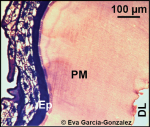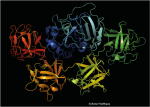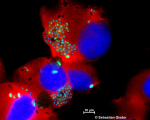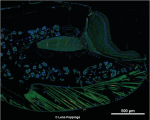Projects
Participation in the DFG Research Training Group 1221/1 "Genetische und immunologische Determinanten von Pathogen-Wirt-Interaktionen" (2005-2014) (Genetic and Immunologic Determinants of Pathogen-Host Interactions):
Molecular characterisation of virulence factors of P. larvae:Genomic and molecular approach
The aim of this project on the interaction between P. larvae and infected honey bee larvae is the identification and description of properties that enable the bacteria to kill larvae and that allow larvae to fend off infections.
DFG research grants GE1365/1-1 (2008-2011) and GE1365/1-2 (2013-2016):
Molecular pathogenesis of American foulbrood of bees
The aim of this project is to achieve a better understanding of the pathogenesis of American foulbrood of bees. Within the framework of the project, in recent years we have identified several genes responsible for the pathogenicity and virulence of P. larvae using comparative genomic and proteomic analyses. We have started characterising these genes and their associated proteins as to their functions and thus have already made progress in explaining pathogenesis on a molecular level.
Innovation and collaborative project funded by BLE / BMELV (2012-2015):
Development of a climate-based model to assess the risk of nosemosis.
The aim of this project is to develop a model with which weather data and the spread and virulence of Nosema spp. infections in the German bee population can be correlated and used to predict the risk of nosemosis. The foundation of this model will be the analysis of the relationships between the intensity of infestation of the honey bee by the parasite Nosema apis and Nosema ceranae, and the outbreak of nosemosis and the weather conditions at the location of the apiary as recorded by local weather stations.
Development project funded by Landwirtschaftliche Rentenbank (2012-2015):
Creation of an atlas of pathology for bees
The aim of this project is the development and creation of a textbook on diseases of bees in the form of an atlas of pathology. The foundation of the textbook will be the analysis and visual presentation of healthy, infected and diseased bees (larvae, pupae, adult bees). Special attention will be given to pathological changes in infected larvae induced by P. larvae, in pupae by the virus DWV and adult bees by Nosema spp.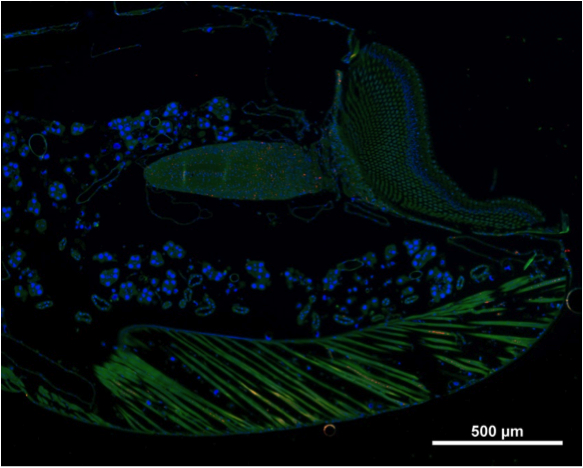
Figure: Fluorescent in situ hybridisation for the detection of DWV (red signals) in a head section of an infected bee. The cell nuclei were stained blue with DAPI, the cytoplasm is green.


